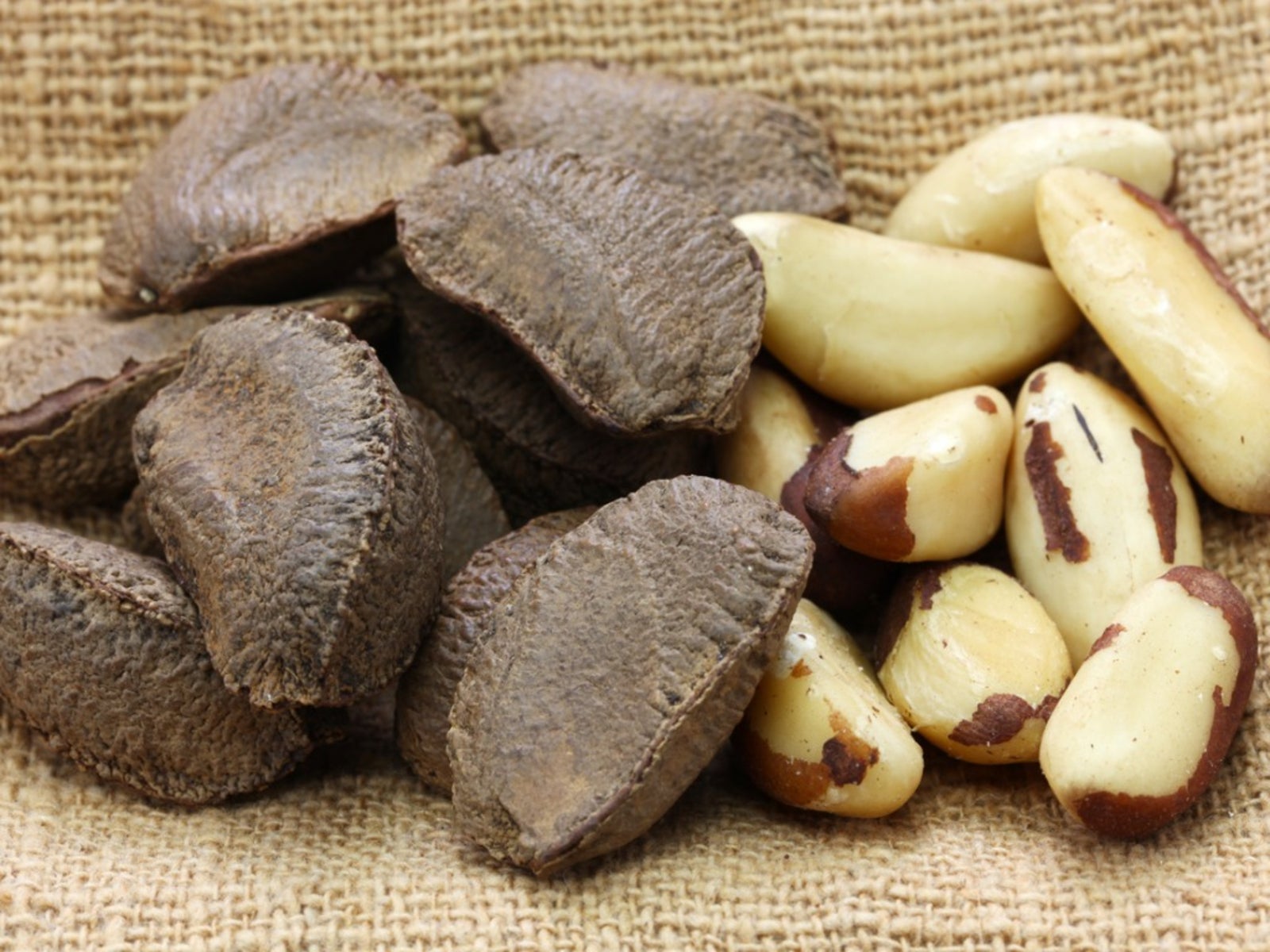
Do you ever get those mixed bags of unshelled nuts? If so, then you are probably familiar with Brazil nuts, which are actually not botanically considered nuts at all. What are Brazil nuts then and what other Brazil nut tree info can we dig up?
What are Brazil Nuts?
Brazil nut trees (Bertholletia excelsa) are the sole species in the monotypic genus Bertholletia, named for the French chemist Claude Louis Berthollet. They are native to certain regions of the Amazon and can reach a height of 160 feet (49 m.) by up to 6 feet (1.8 m.) across and can live for 500 years or longer. The bark is smooth and grey and leaves are dry-season deciduous. Flowers are born in panicles with each flower possessing a two part deciduous calyx, six cream colored petals and a multitude of stamens shaped into a hooded mass. The fruit takes about 14 months to mature once pollinated. The resulting fruit is quite large (4-6 inches (10-15 cm.) across and weighing up to 5 pounds or 2.3 kg.) and looks much akin to a coconut endocarp. Inside the hard, woody shell, 8-24 distinctly triangular seeds reside packed together just like orange segments. These seeds are what we refer to as Brazil nuts. Nuts, botanically speaking, are actually a hard-shelled indehiscent fruit like an acorn.
Brazil Nut Tree Info
At the end of this fruit capsule, there is a hole that allows the local agouti to gnaw the fruit open. They then eat some seeds and, like our squirrels, bury some for a later date. Some of the buried seeds become new Brazil nut trees. Sounds like this might be an easy method for procreation, but the fact is that the seed may have been buried in a shaded area and may wait in stasis for years until surrounding trees die and fall, allowing the sunlight to penetrate to where the seed is. It is illegal to cut down one of these trees in Brazil. Thus, where once they were the exclusive province of areas of undisturbed forest, they can now be found in people’s backyards and along streets and roads. In order to produce fruit, however, certain bees of the genera Bombus, Centris, Epicharis, Eulaema and Zylocopa must be present to pollinate the flowers. These large bodied bees are largely lacking in disturbed forest areas. Because of this, although Brazil tree plantations have been attempted, natural cultivation has proven to be more reliable. Despite their name, the largest exporter of Brazil nuts is actually Bolivia where the nut is called nuez de Brasil. Both rural Bolivians and Brazilians rely on collection and sale of Brazil nuts as a primary source of income. The harvesting of naturally growing Brazil trees has prevented deforestation for this reason in many areas of the Amazon. As mentioned, commercial cultivation has proven to be a vain endeavor. But, growing Brazil nuts is not outside the realms of possibility. Keep reading to find out how to grow Brazil nuts.
How to Grow Brazil Nuts
Growing your own Brazil nuts will require some patience and, while it is difficult, is a rewarding endeavor. First, you need to gather some Brazil nuts. If you take them from the previously mentioned bag of mixed unshelled nuts, you won’t be able to propagate them. Those nuts have been boiled as a part of their processing. The boiling will kill the seed, rendering it impotent. Obtain proper seed stock from an online nursery or if you live in the Amazon, of course, you can harvest directly from the rain forest. Ask questions to be certain that you are getting healthy, raw seed for planting, not eating. Once you have obtained the seed, soak it in water for 24 hours to loosen the outer husk. Pour out the water and rinse the seeds. Soak the seeds again and repeat the rinsing and soaking process every 8 hours until the seed sprouts. When the seeds have sprouted, fill a container, such as a clear glass jar, 2/3 full with nutrient rich potting soil. Make a hole in the center of the soil and push the seed in. Cover it with dirt, allowing the sprouted end to poke up through the soil. Moisten the soil and keep it moist. Cover the container with gauze or cheesecloth and secure it tightly with a rubber band. Put the container in a warm area with indirect sunlight and check it for growth and dryness. When the seedling is 6-12 inches (15-30 cm.) tall, plant it in an area with full sun, well-draining soil and high humidity with warm tropical temperatures.
Sign up for the Gardening Know How newsletter today and receive a free copy of our e-book "How to Grow Delicious Tomatoes".

Amy Grant has been gardening for 30 years and writing for 15. A professional chef and caterer, Amy's area of expertise is culinary gardening.
